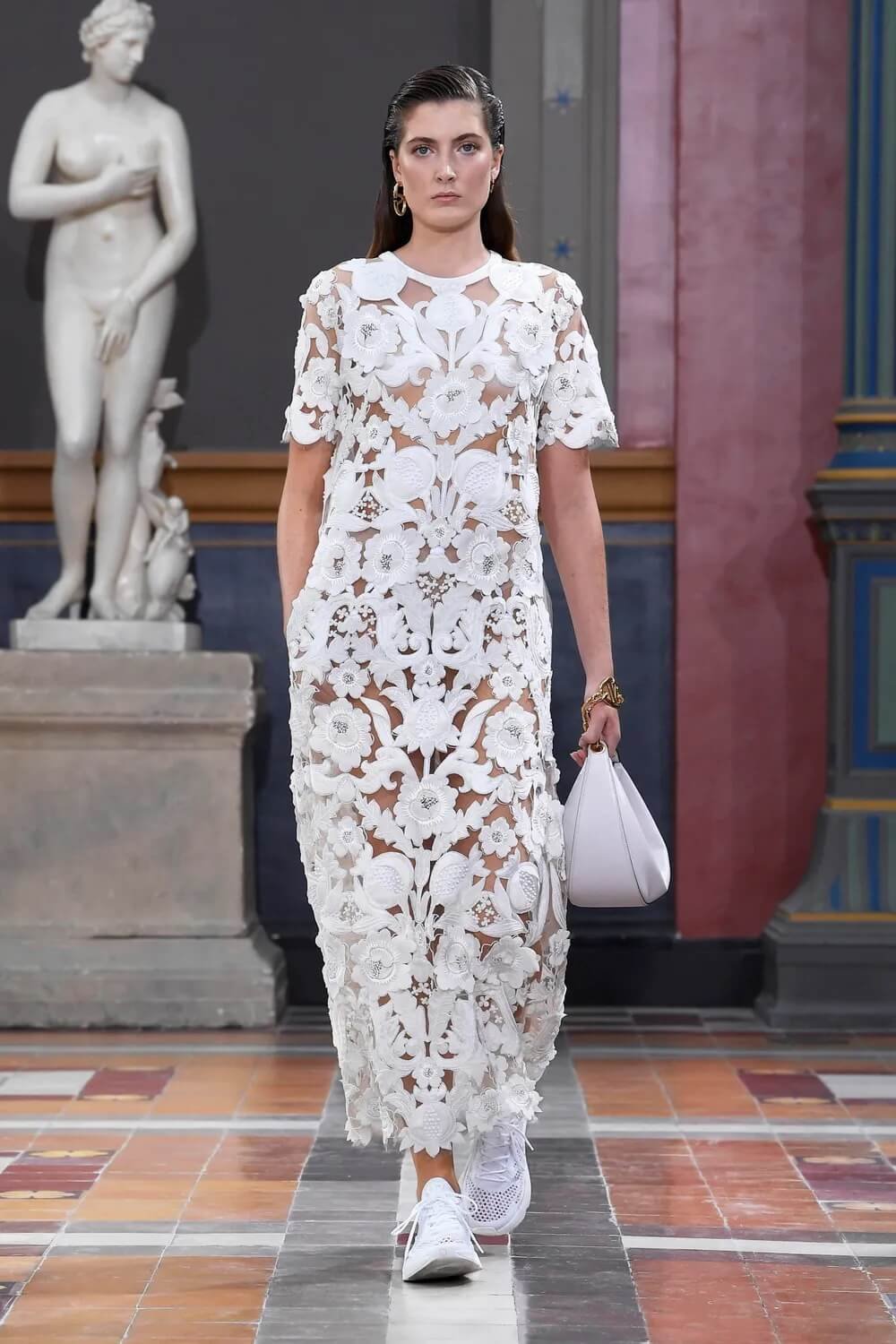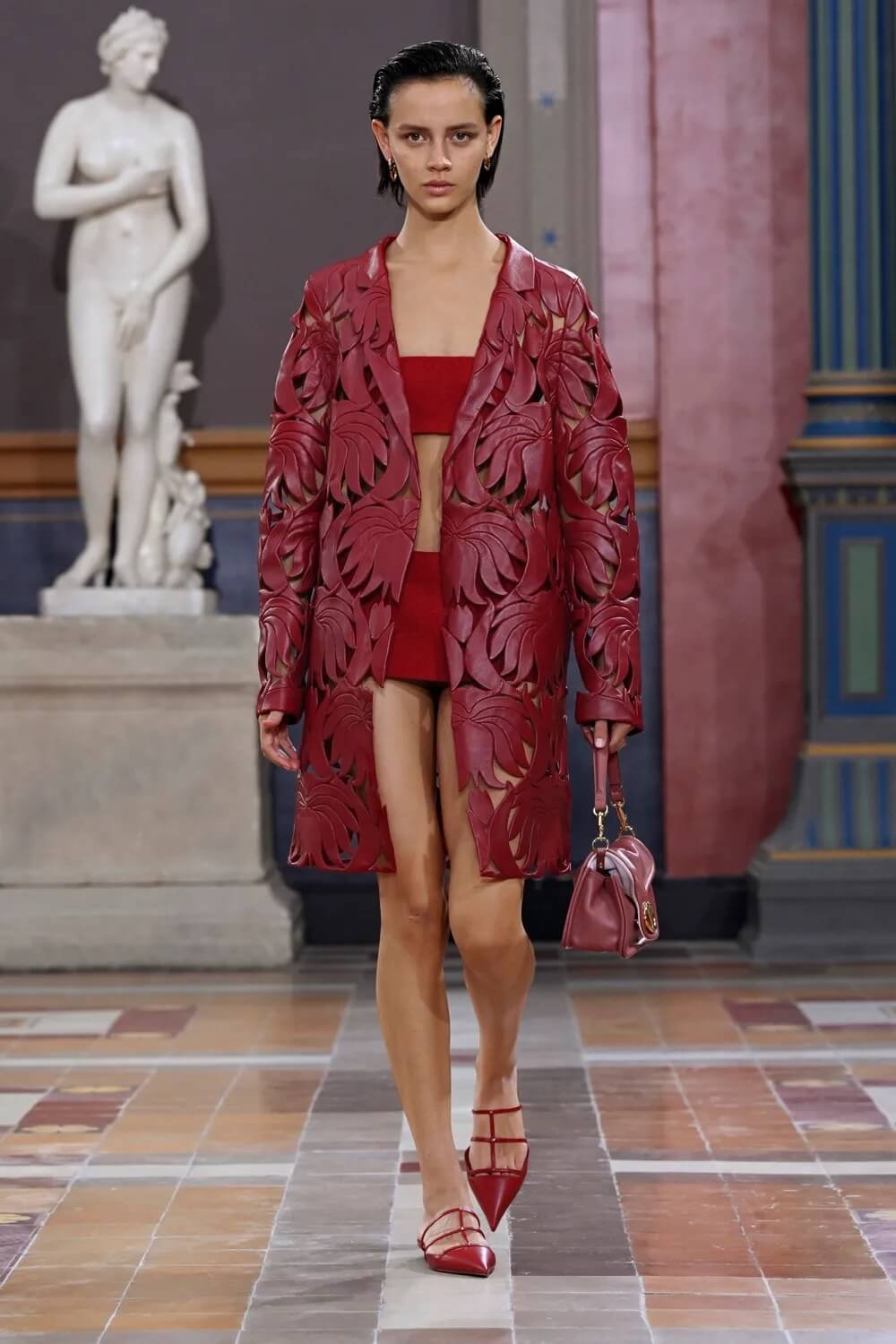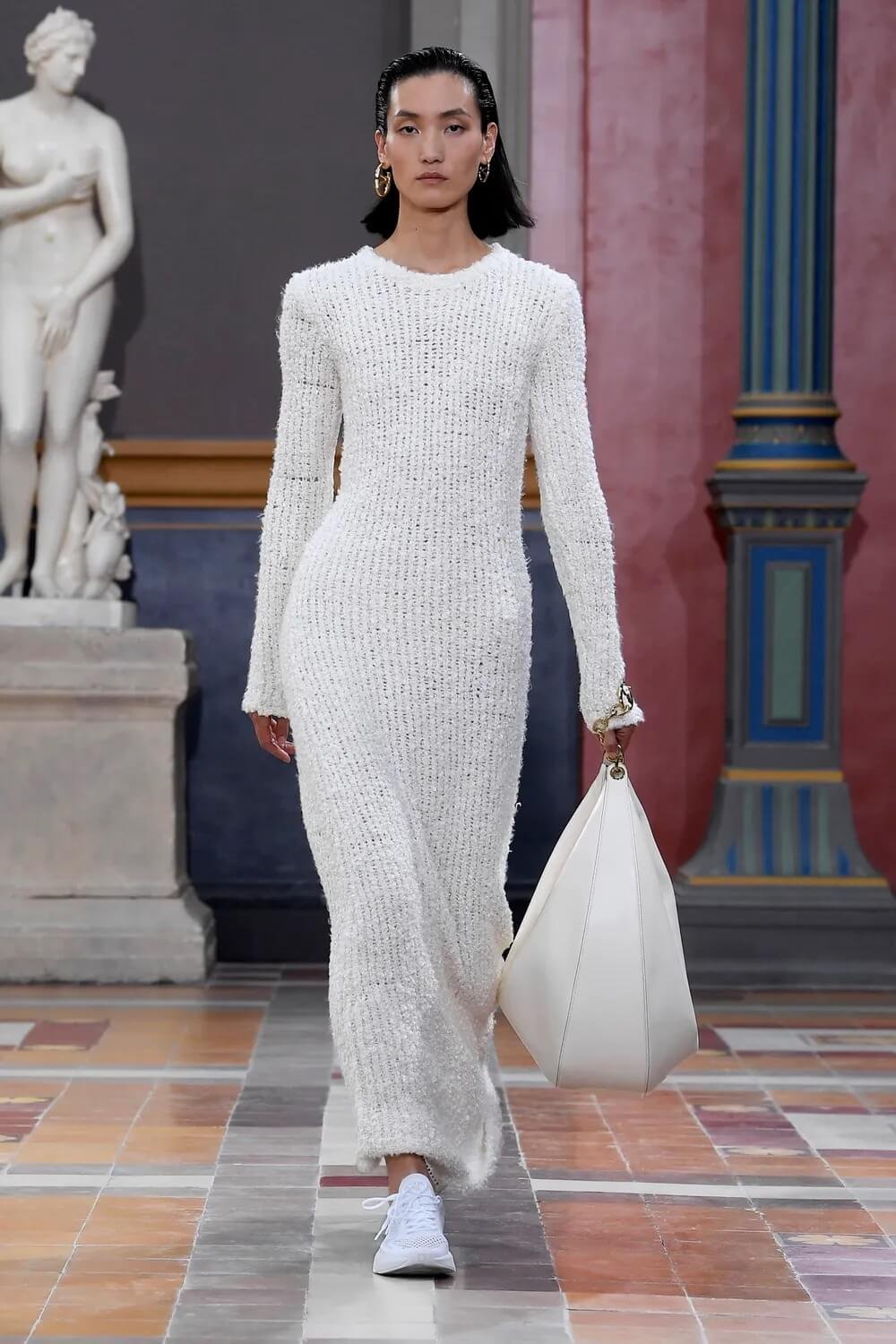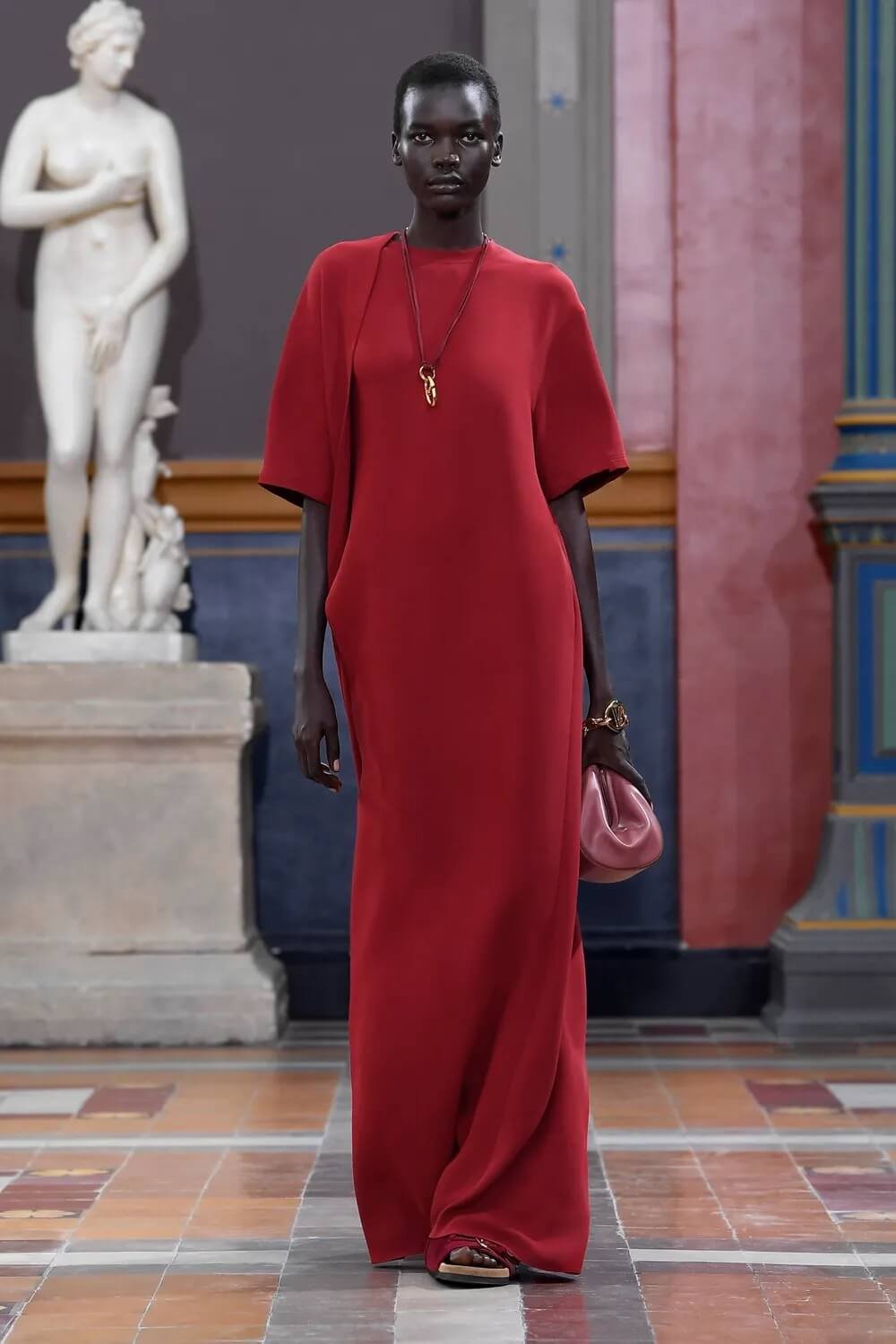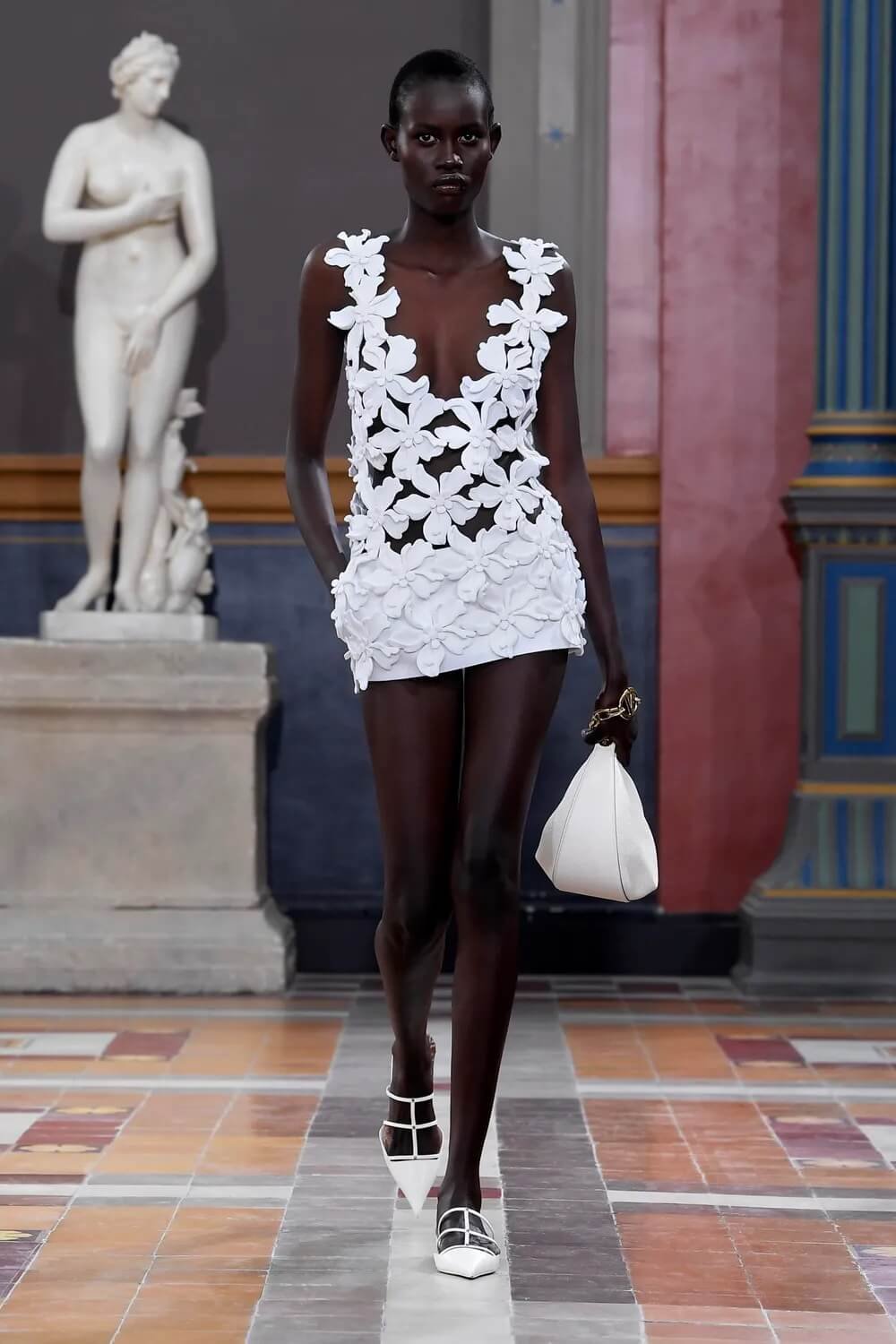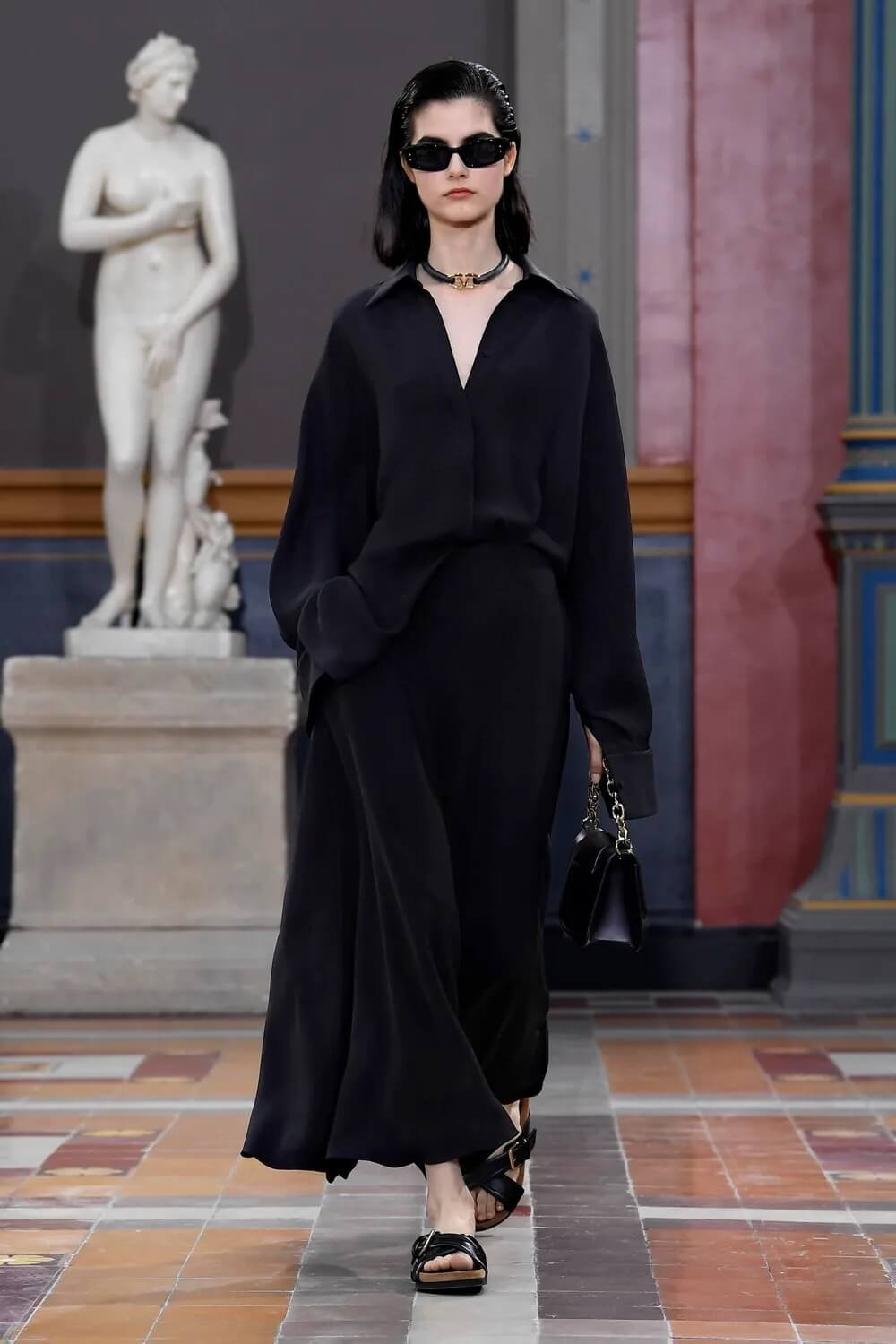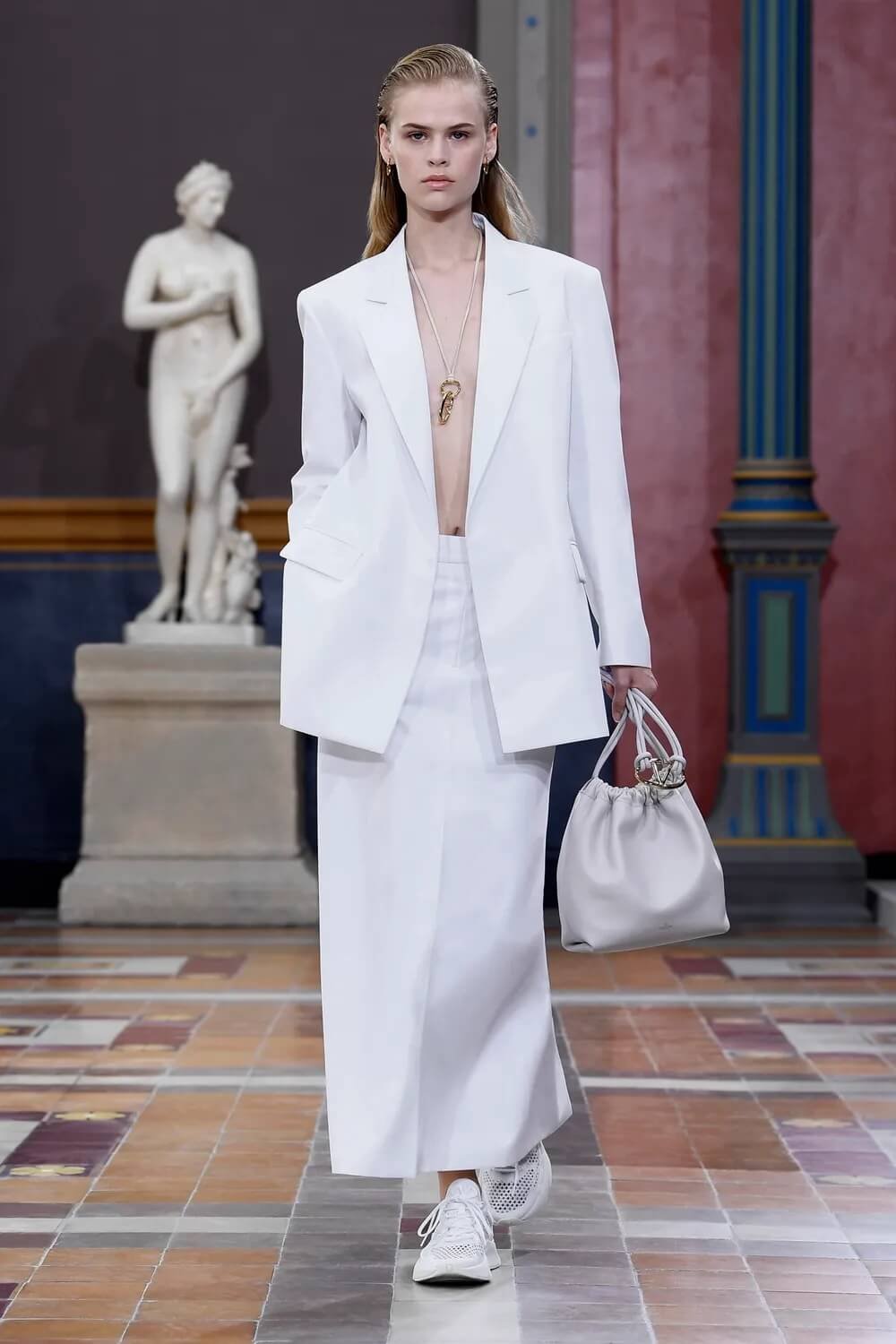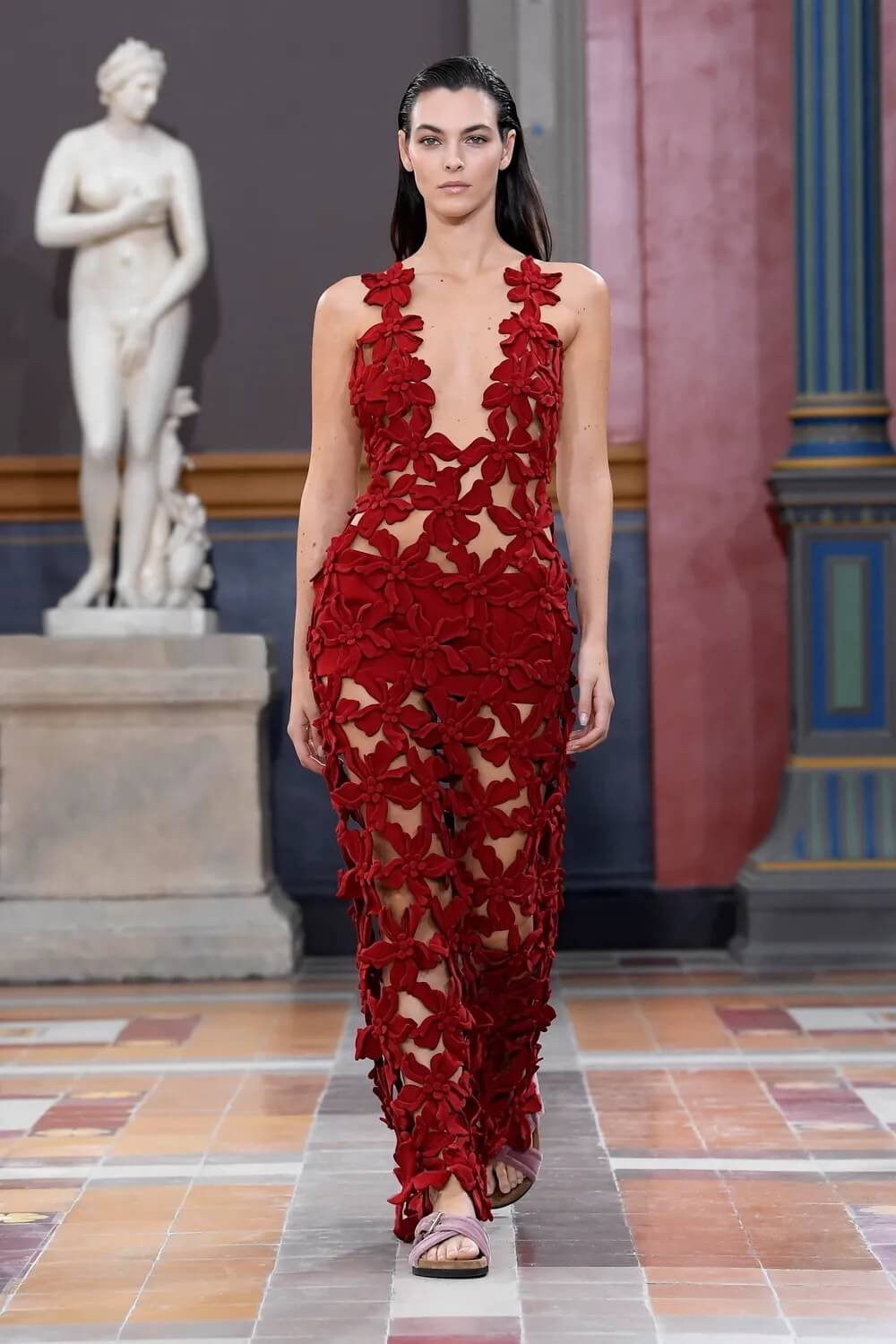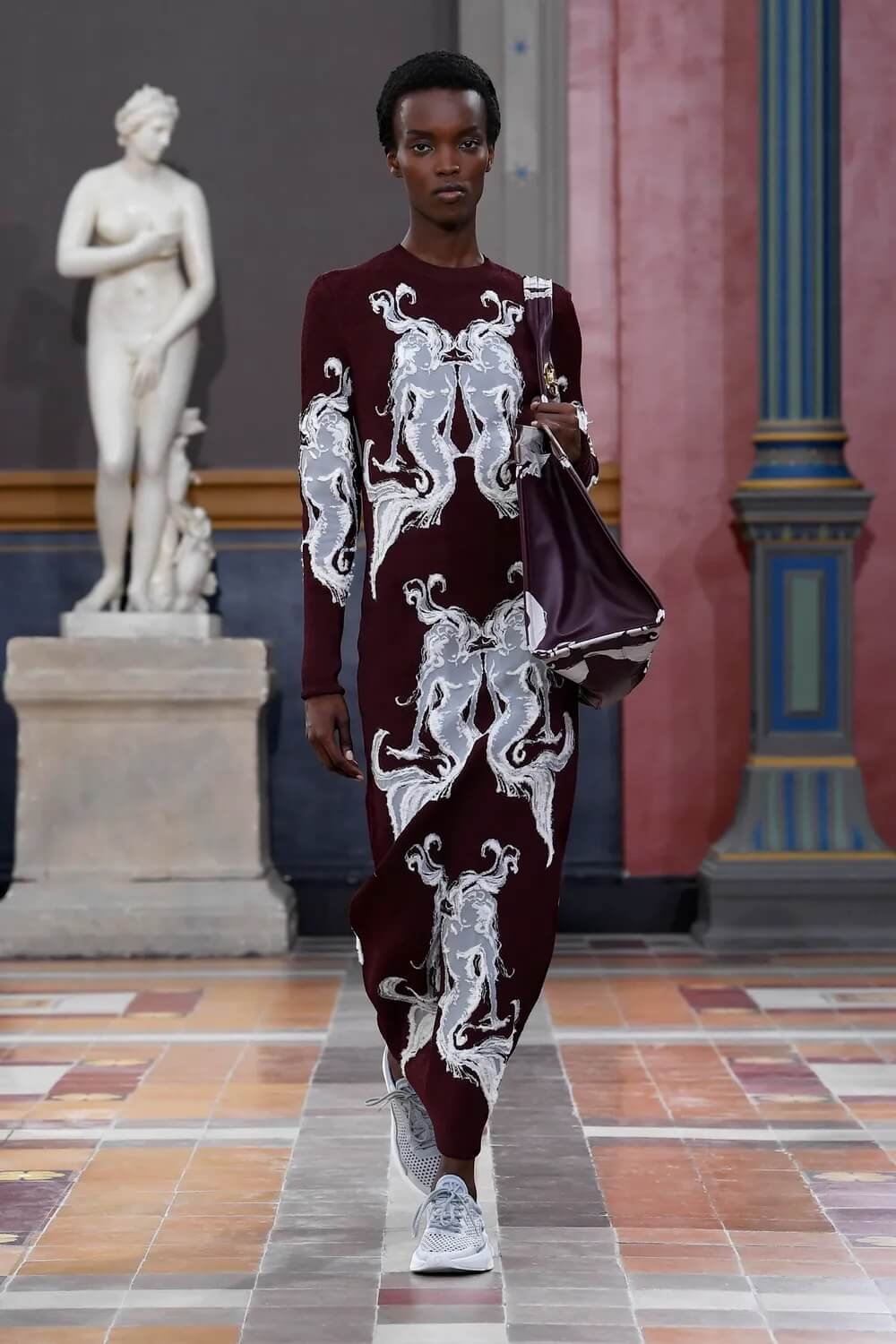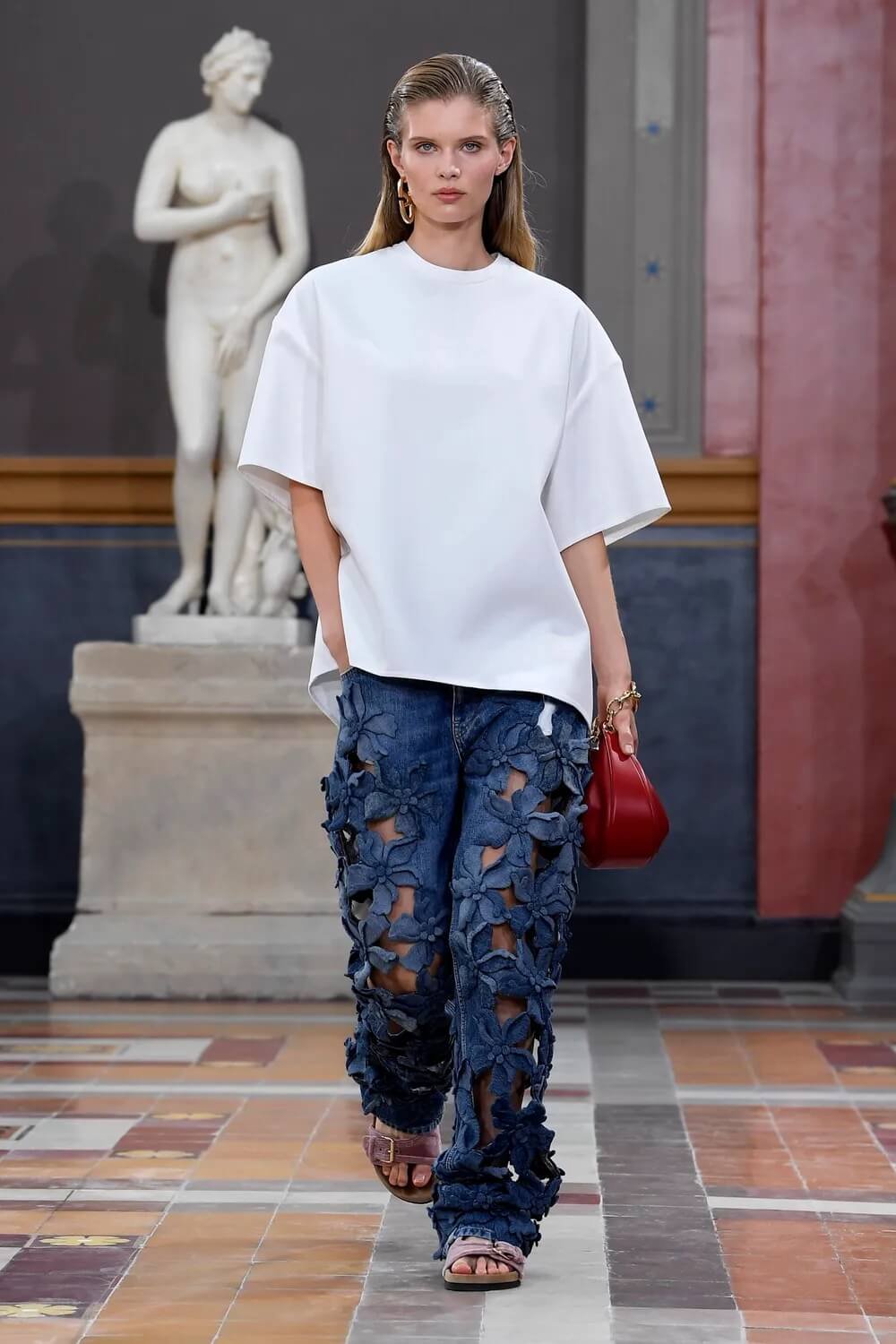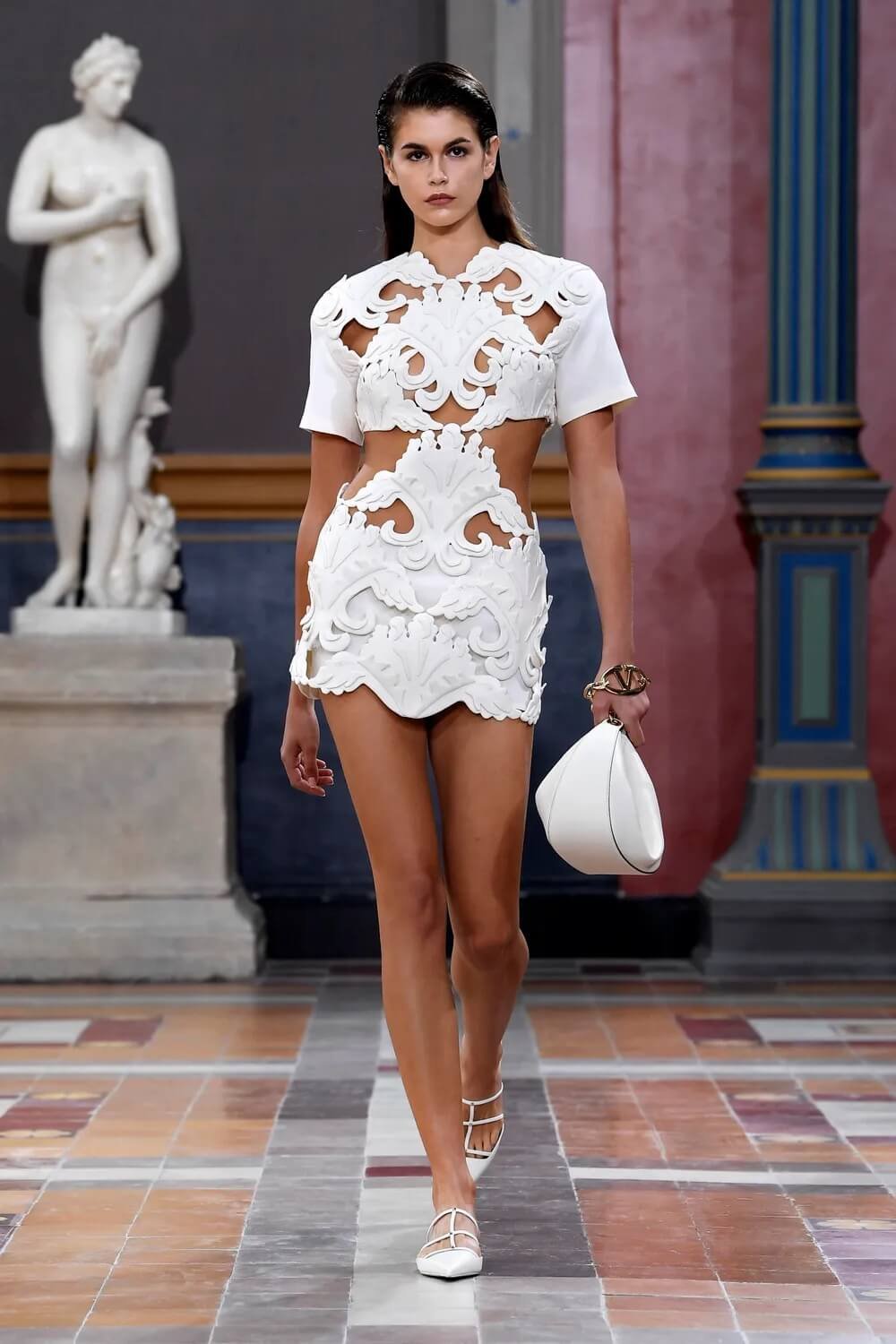Spring fashion trend: Valentino S/S 2024
At the core of the modest fashion community lies a pivotal question: How can women achieve independence and freedom in their bodies? This question also piqued the interest of Pierpaolo Piccioli, who explored this concept in the Valentino Spring/Summer 2024 collection. Speaking of the show, Piccioli said on his Instagram:
‘I wanted to free the naked body from the interpretations of others, from the gaze of others, preserving the purity and integrity of it. This collection is my feminist manifesto, or at least my attempt to break clichés and stereotypes.’
The collection predominantly showcased dresses, ranging from form-fitting to loose, complemented by blazers and jeans. While some skirts and dresses were notably short—well above the knees, shorts were knee-length. The defining feature of the collection was the use of cut-outs. Dresses, tops, jackets, vest tops, and even jeans were constructed from floral or bird-shaped cut-outs, assembled in repeating motifs. The intricacy of this design endowed the collection with couture-level craftsmanship. The colour palette predominantly featured white, black, or deep red hues, with the intentional use of red to symbolise femininity. Piccioli noted on his Instagram:
‘Rosso is the colour of freedom; it’s the colour of original sin, which ended up being love. Rosso is the colour of love, blood, and life.’
Similar thought and attention went towards the entire collection. For instance, the floral motifs of the dresses were inspired by sculptural relief, an artistic practice whereby the sculptural pieces stem out from the background. Piccioli envisioned the skin as the origin and an integral part of the design itself. It was important to construct the floral motifs around the models' bodies alto-relievo style, such that it fit like a second skin and allowed maximum comfort and movability.
There were some modest-friendly pieces, such as maxi dresses with long sleeves and more flowy dresses. On the other hand, when dresses were short, they were extremely short. In the show interview, Piccioli revealed that there is no such thing as a garment being too short. It may be inferred that the shortness of some of the outfits was intended to provoke and reinforce the idea – women can wear what they like.
Image from Valentino.com
Image from Valentino.com
There is a prevailing view in the modest fashion world that independence of the female body can be achieved by covering up, by not courting attention. In his collection, Pierpaolo Piccioli challenges this idea. Ornate floral cut-outs adorned fabrics, strategically placed to create an illusion of both modesty and being undressed. This deliberate ambiguity created an interesting concept of 'nude' and asked where the line between modesty and 'naked' lies. Based on this collection, it appears Piccioli might be saying it rests with the viewer. Even when models donned dresses that concealed most of their bodies, it is the viewer's lingering gaze that imposes meaning. Thus, the viewer's (or society's) perception plays a crucial role in ascribing meaning (or passing judgement) about women’s dress and bodies. This intentional interplay of covered and uncovered invites a dialogue on the subjective nature of modesty and independence of the female form.
So, how can women obtain independence and freedom in their bodies? Based on Piccioli's published work and this collection, 1) not by hiding their body but by dressing however they choose, 2) we should educate ourselves and not assign our unsolicited judgement onto women’s bodies. Piccioli also tries to make a case that 3) revealing clothes do not equate to sexiness.
Speaking as a woman who follows a modest fashion and way of life, these ideas raise some interesting views. A popular argument in the modest community is that covering up offers women freedom, specifically freedom from unwanted attention. However, this is untrue because, sadly, negative attention and even assault can happen to women wearing a burka or a habit. It is also important to note that dressing modestly does not exempt women from scrutiny. Be it judgment from within the community – you are not dressed modestly enough. Or judgment outside the community – you must be an oppressed woman in desperate need of a western saviour. It seems women’s bodies are subject to judgment no matter what we do.
In this regard, I agree with Piccioli; women should dress how they like, and society should take better steps to educate young people to respect women’s autonomy. I also agree that revealing clothes do not necessarily mean sexiness. Sexiness is a multifaceted construct, and different cultures have different understandings of what qualifies as sexy or modest. But is baring it all the feminist manifesto?
The assertion that revealing clothing does not equate to sexiness ignores the reality of attraction – as it is understood in the modern world. Our bodies, regardless of gender, are immutably tied to our sexuality, and clothing that reveals more of our bodies will naturally be perceived as more sexually suggestive. This does not mean that women who wear revealing clothing are asking for sexual attention or that they are not in control of their own sexuality. It simply means that our bodies are inherently sexual, and that clothing can amplify or diminish this sexuality. Either way, there are real-world consequences for women. Brain scans of men looking at images of women who were wearing revealing clothes showed increased activation in the region of the brain that views the women as a person incapable of thought (object-like). A woman can wear whatever she desires and should not be harassed, but people’s instinctive reaction to her dress is also worth considering.
Importantly, how we dress and present ourselves are languages we use to communicate our stories to others. So, it is crucial to be intentional about what we choose to convey. If a woman wants to communicate sexuality, she should dress sexy. But there are other stories a woman may choose to tell, and they will require a different sartorial language. To his credit, Piccioli presented pieces that were more covered, truly reflecting the meaning of feminism – the right for women to choose.
Philosophical musings aside, the collection was beautiful, feminine, and elegant. Piccioli has a unique way of truly celebrating the beauty of women, in ways that are innovative and thought-provoking. As it turns out, the modest manifesto has a lot in common with the feminist manifesto, and it is perfectly summed up by Piccioli himself:
‘It’s important for women to be free to express themselves through their body and not to be judged.’

